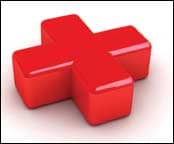Aerobic training still provides the greatest return in rehabilitation for cardiac patients compared to resistance training for recovering cardiac patients. The findings of study that will publish next month in the Archives of Physical Medicine and Rehabilitation demonstrates aerobic training provides an effective level of support for cardiac rehabilitation regardless of the level of resistance training that might be added to the program.
The College of Idaho-based investigation included two groups that performed combined aerobic and resistance training. One level was performed at lower intensity, and the second level was performed at higher intensity. Study results concluded that men and women who participated in programs that combined aerobic and resistance training found no advantages in the intensity of resistance training, even when resistance training was effectively doubled for one group.
"Our data demonstrate that for cardiac patients, women and men engaged in combined AT and RT, a twice-per-week 3 set x 15 reps volume of resistance exercise performed on 10 different lifts resulted in no training advantage over 2 set x 12 reps," commented Serge P. von Duvillard, PhD, FACSM, FECSS, director, applied physiology laboratory, department of kinesiology-exercise science and biology, The College of Idaho.
Furthermore, von Duvillard explains, combining resistance protocol with more traditional AT in cardiac rehabilitation programs resulted in substantial physical fitness benefits, as well as reductions in cardiovascular risk markers. In the interest of supervision time, exercise duration, and equipment usage, applying the 2 set x 12 reps model of resistance exercise appears effective and efficient."
Both groups showed equivalent improvement in exercise capacity, muscular strength, hemodynamics and blood chemistries regardless of RT volume. Blood lipids and other cardiovascular risk indicators were generally improved. Maximal oxygen uptake increased by 11%. There were modest but significant reductions in resting heart rate and resting systolic and diastolic blood pressure
Source: Elseiver Publications




